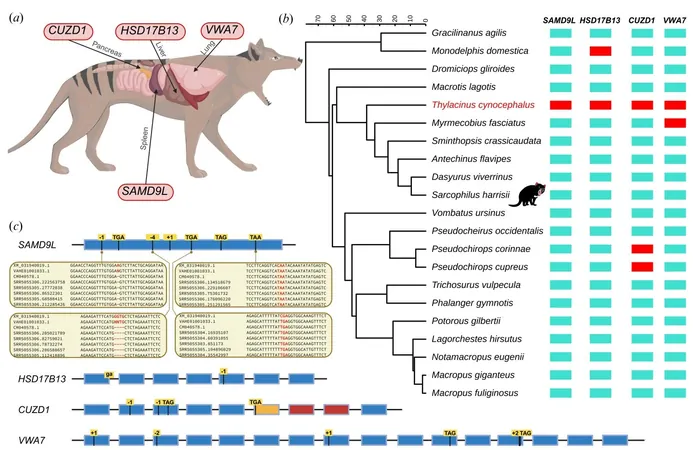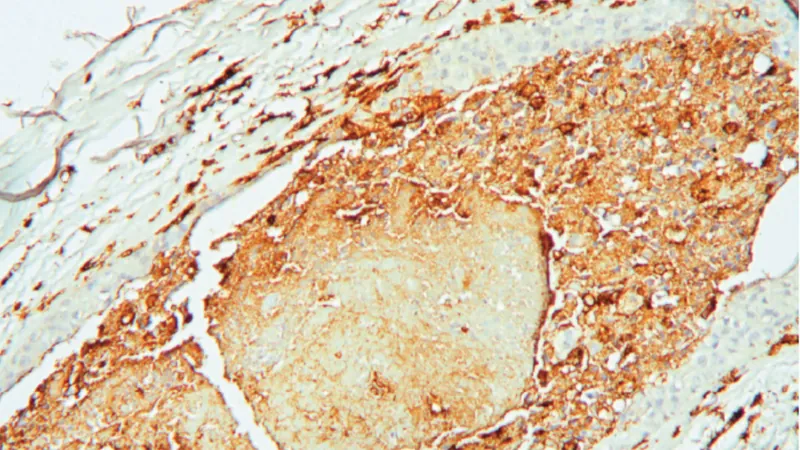
The Hidden Genetic Factors Behind the Tasmanian Tiger's Extinction
2025-08-27
Author: Arjun
Unraveling the Mystery of the Thylacine's Decline
Once roaming the vast expanses of Australia, Tasmania, and New Guinea, the enigmatic thylacine, often dubbed the Tasmanian tiger or Tasmanian wolf, vanished entirely by 1936. Though it had tiger-like stripes and wolf-like features, the thylacine was actually a marsupial, closely related to the Tasmanian devil.
More Than Just Predation: The Genetic Downfall
Historically, it was believed that the thylacine’s extinction was chiefly due to competition from introduced dingoes and ruthless hunting by humans who viewed them as nuisances. However, a groundbreaking study published in the Proceedings of the Royal Society B: Biological Sciences has unveiled deeper genetic facets contributing to their decline.
Researchers Buddhabhushan Girish Salve and Nagarjun Vijay conducted a compelling analysis of the thylacine gene pool, comparing its genome with those of the Tasmanian devil and other related marsupials. This cutting-edge research utilized machine learning to uncover lost genes and track the timeline of gene loss.
The Lost Genes: How Survival and Evolution Intertwine
The study’s findings indicated that four significant genes—SAMD9L, HSD17B13, CUZD1, and VWA7—were lost millions of years ago, well before the arrival of humans and dingoes. These genes were vital for various functions including immune response and tumor suppression, as well as adaptations that would have helped thylacines develop a more carnivorous diet and larger size.
Shifts in Senses: Olfactory Changes That Impacted Survival
Interestingly, researchers also observed a decrease in olfactory lobe size and a loss of olfactory receptor genes, suggesting that thylacines may have shifted away from relying on smell for hunting—a crucial adaptation. This change may have coincided with their growth in size and improved vision, which allowed them to spot prey more easily amidst the dense scrubland.
Climatic Changes and Genetic Drift
The authors believe that these genetic alterations were likely triggered by climatic changes that preceded significant shifts in their environment. The study highlights a critical period of evolutionary transformation for the thylacine’s lineage, wherein the aridification of Australia forced these creatures to adapt in ways that ultimately may have led to their undoing.
Lessons for Today's Conservation Efforts
While the study suggests that disease played a minor role in the thylacine’s extinction, adaptive gene loss demonstrates how changes that were once advantageous can later hinder survival. The researchers note that understanding the complex interaction between genetics and environmental pressures is crucial for future conservation strategies.
"Our research sheds light on the necessity of genetic adaptability for species survival," they concluded. "Further investigations into the genetics of both existing and extinct species will unveil insights about their ecological past, helping to inform effective conservation measures for the future."




 Brasil (PT)
Brasil (PT)
 Canada (EN)
Canada (EN)
 Chile (ES)
Chile (ES)
 Česko (CS)
Česko (CS)
 대한민국 (KO)
대한민국 (KO)
 España (ES)
España (ES)
 France (FR)
France (FR)
 Hong Kong (EN)
Hong Kong (EN)
 Italia (IT)
Italia (IT)
 日本 (JA)
日本 (JA)
 Magyarország (HU)
Magyarország (HU)
 Norge (NO)
Norge (NO)
 Polska (PL)
Polska (PL)
 Schweiz (DE)
Schweiz (DE)
 Singapore (EN)
Singapore (EN)
 Sverige (SV)
Sverige (SV)
 Suomi (FI)
Suomi (FI)
 Türkiye (TR)
Türkiye (TR)
 الإمارات العربية المتحدة (AR)
الإمارات العربية المتحدة (AR)